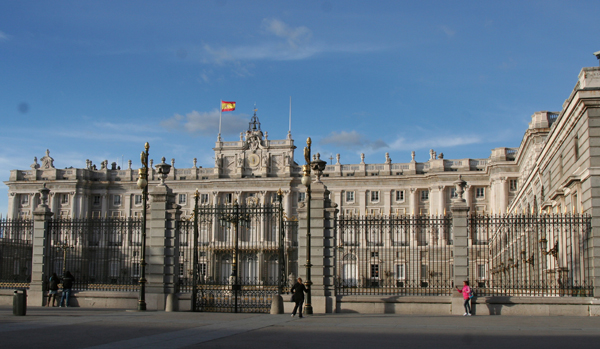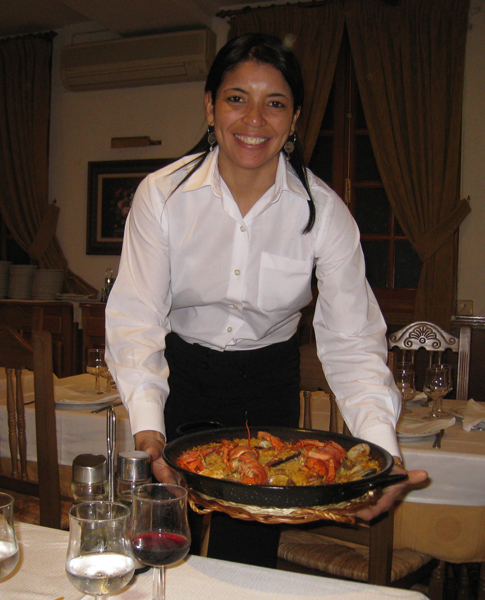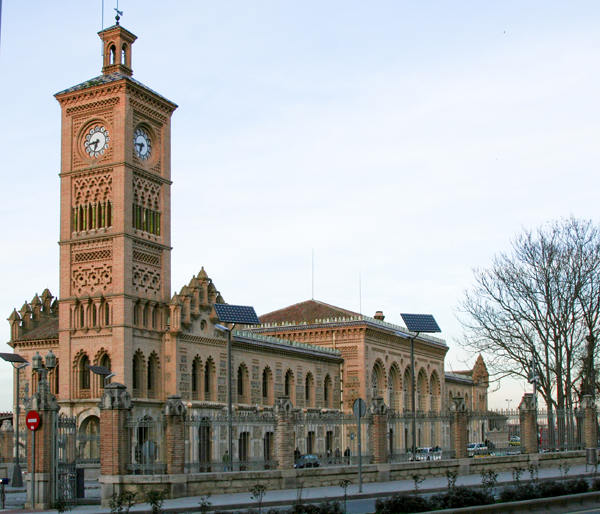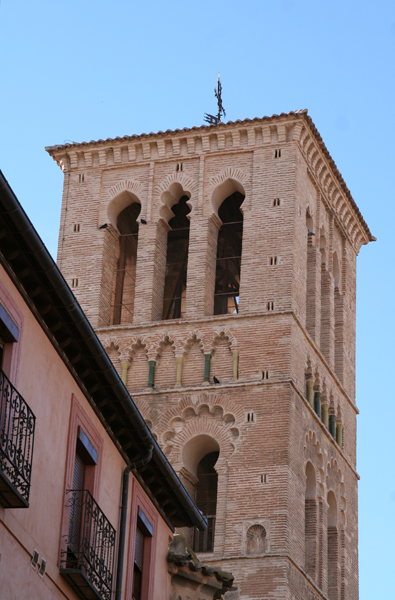Day 3-Madrid: I picked up a late breakfast at Starbucks and we waited for our daughter and son-in-law at our hotel. They arrived right on schedule via the airport and the metro. Notwithstanding their fatigue from the long over-night flight from Oklahoma, we immediately started off to see the Royal Palace.

King Philip V, who ruled Spain for 40 years, commissioned this huge palace. He was the grandson of Louis XIV and was born in Versailles. His French style, coupled with his wife’s Italian heritage, can be seen throughout the more than 2,000 rooms. We didn’t see them all. It is very beautiful and it is still used today for formal affairs. The throne room was especially impressive. This is where King Juan Carlos greets his guests before dinner. The Stradivarius Room has the only in tact Stradivarius quartet (2 violins, a viola, and a cello) in existence. The armory is full of interesting armor and other instruments of battle, attractively displayed, from the 1400s on. The oldest piece is the shield of Boabdil who was the last Moorish king. No photos are allowed inside the Palace, so you will have to see it for yourself.
We went for lunch at the market that Barbara and I had found the day before. The food (small servings of a variety of selections) was interesting and quite good. Daughter and Barbara, proving the adage that woman is the stronger sex, immediately took off to see the Centro de Arte Reina Sofia to view its modern art collection, while the males returned to the hotel for a (for them) much needed nap. Meanwhile, the “girls” enjoyed the works of Goya, Miro, Dali, Picasso, El Greco and lesser (?) lights at the Modern Art Museum. The highlight, considered by many to be the most impressive work of art in Spain, was Picasso’s “Guernica“. In shades of stark black and white, this expansive canvas shows the horrors of modern warfare (the Spanish Civil War bombing of Guernica by Hitler operatives at the request of Franco) in modernistic form. This painting, shown only in New York until after the death of Franco, generates one’s interest in the history that it illumines.

In mid-afternoon, we all met at the Prado. This huge facility houses more art than can possibly be viewed in a day, or perhaps a week. The most important masterpieces and their locations are listed in the brochure, so we made it a point to find them.

That evening we enjoyed a Spanish specialty, Paella, at a local restaurant recommended by our hotel staff. This capped a very long and busy day.

Day 4-Friday the 25th: We walked from our hotel, the Preciado, through Puerto del Sol, to the train station to board for a trip to Toledo. The next couple of trains were fully booked, so we reserved seats on a later morning departure. With an hour or so to spare, we walked around the park for a while. The ride to Toledo is only about 30 minutes, through interesting open country-side. Toledo was once the Capital of Spain. The mix of Jewish, Moorish, and Christian heritages makes it very interesting.
The train station at Toledo is a neo-moorish style, very attractive.

From the train station we took a taxi up the “hill” to the Cathedral. Our first objective was to find a place for lunch. The hilly terrain makes walking a bit difficult, but we located a little open-air cafe and enjoyed a typical Spanish mid-day repast. Thence, to the Cathedral.

How ornate!!! Some would say “over-the-top” with its vast array of gold and jewels located throughout: at the high altar, the choir area, the side altars, the sacristy full of masterpieces of European artists, the room full of old, ornate vestments, etc. The most interesting is the Treasury, the resting place for the 10-foot tall, 430 pound monstrance, layered in gold. One day a year, Corpus Christi Sunday, it is taken from the Treasury and carried through the streets of old Toledo. Again, no photos inside, so there’s another place for you to see for yourself.
From the Cathedral we walked to Santo Tome Chapel to see El Greco’s, “The Burial of the Count of Orgaz”. Some consider this to be El Greco’s finest work. It certainly is impressive and especially since it is still in the place where the artist placed it 400 years ago. We all spent many minutes, fascinated by the lovely colors, shadings and details of the painting. El Greco was the resident artist here and called it home.

After Santo Tome, I relaxed a bit while the others went to the Santa Cruz Museum to see the lovely old tapestries.

We then sampled a little of the local specialty, marzipan, produced, apparently by the bushel, by the nuns in the local convents, and sold in many small shops. We are all big fans of marzipan, so the local specialty was especially enjoyable for us.
The sun was going down by now, so we hailed a taxi for a ride to the train station and the fast train trip back to Madrid for another late Spanish schedule dinner.
